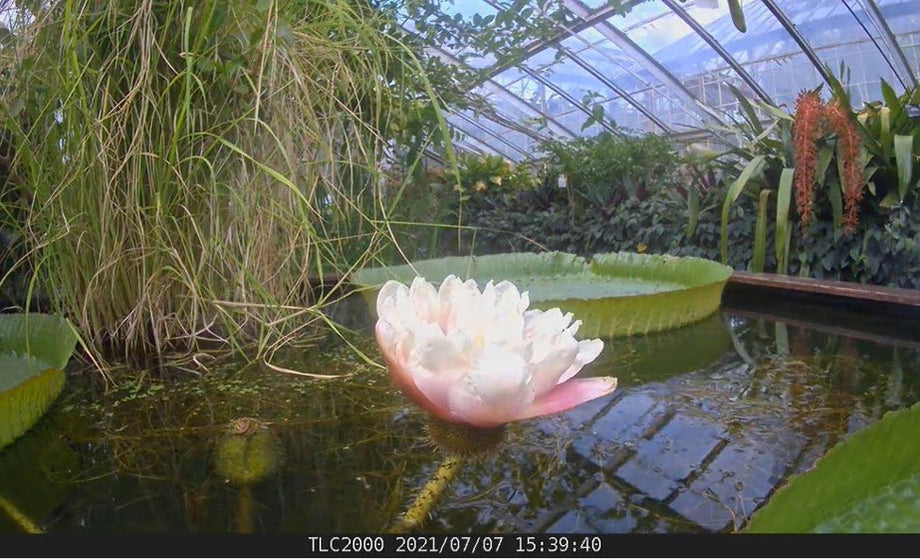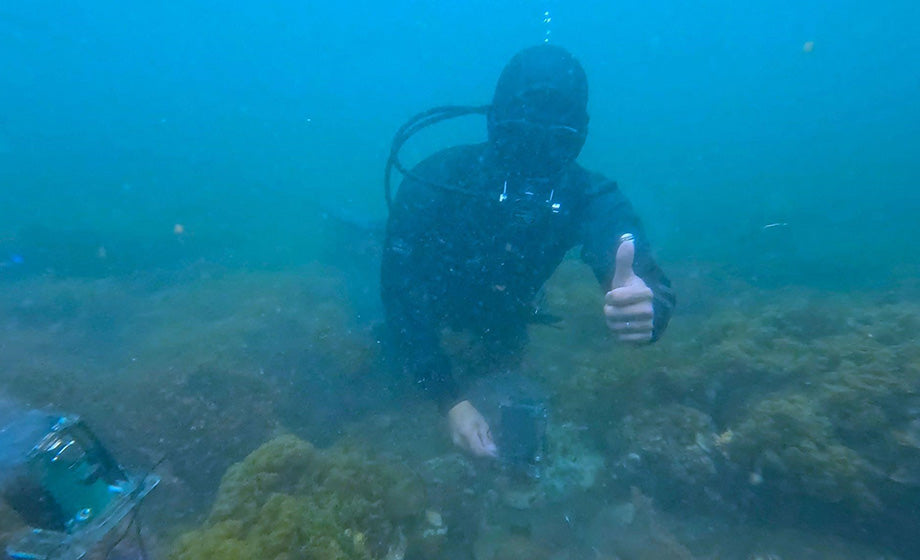A very special time lapse of the giant Santa Cruz water lily (Victoria Cruziana) was recorded by the team at Cambridge University Botanic Garden using a Brinno TLC2020 camera. Featured as a part of their Time Lapse Treasures series, the Santa Cruzlily is one of two giant species in the Victoria lily genus. The flower is found in South America and was first cultivated during the reign of Queen Victoria, hence the genus name Victoria.
Earlier in February, the Botanic Garden team plucked seeds from one of the old lilies and placed them in a recycled jamjar. The seeds are very delicate and in order to survive they need to be kept constantly wet and warm.
For the next few weeks, the seeds were kept submerged in a 28 degree Celsius water tank in the Tropical Reserve House. They stayed there until tiny leaves started to sprout meaning they were ready to be potted. Once leaves start to appear, growth speeds up exponentially and the lily needs to be constantly repotted into a larger pot every 2 weeks.
In May, after about two months of growth, the strongest seed was selected and potted in a huge 1 meter pot in theTropical Wetlands Pond. It was not long before the giant lily’s leaves grew to be over 1 meter in diameter and by July a number of flowering buds appeared.
The Santa Cruz lily has a special blooming process that involves two unique blooming events with very different characteristics.
During the first bloom, the flower will open in the evening to reveal white petals and the flower releases a pleasant scent that resembles a fresh pineapple. Without natural pollinators present in the Tropical Reserve House, the Botanic Garden team will use a paintbrush to pollinate the flower by hand. By sunrise, the flower will be fully closed but will slowly open back up throughout that next day.
When it opens for its second time the flower has gone through a beautiful transformation and reveals pink-colored petals. The flower then slowly closes one last time and elegantly sinks underwater.
After a few months of being submerged, the flower stalk will be brought to the surface by the Botanic Garden team and inspected to see how many seeds have been produced. Typically there will be hundreds of seeds per flower bud. At this time the seeds will be harvested and kept under water in a 14 degree Celsius tank until the following February/March when the entire process will start up again.
The Santa Cruz water lily is a wonderful flower to feature and Brinno is honored to have been able to help CambridgeUniversity capture its unique flowering process.
Read more about the Santa Cruz lily on the Cambridge University Botanic Garden website and learn about why former trainee Emily chose it as their favorite plant. This is our third feature story in our partnership with Cambridge University Botanic Garden; explore our previous articles on the rare Amazonian Moonflower and endangered Jade Vine.
Learn more about the full HD filming capabilities of the TLC2020 time lapse camera and how Brinno has time lapse solutions for all types of research applications.



